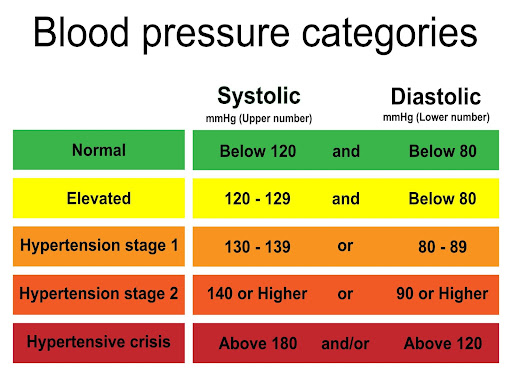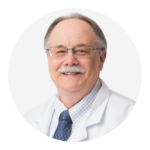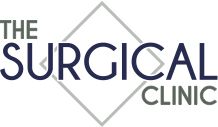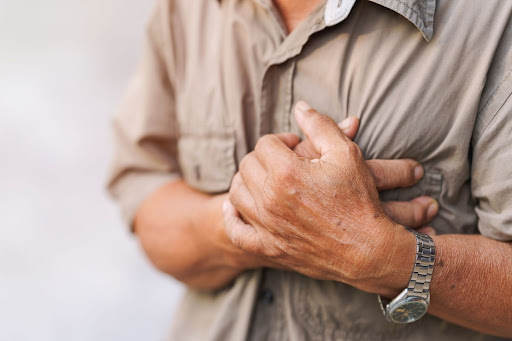In the human body, the vascular system is made up of more than 60,000 miles of blood vessels that connect and support vital body functions. Vascular conditions can present anywhere along this astoundingly large network, and so vascular conditions can develop in many different parts of the human body.
Our licensed and board certified vascular surgeons at the surgical clinic are highly trained professionals who are committed to providing the most excellent care for each and every one of our patients.
Here we will cover some of the most common vascular conditions and diseases and the kinds of treatments we offer at The Surgical Clinic.
TYPES OF VASCULAR CONDITIONS
ABDOMINAL AORTIC ANEURYSM (AAA)
The aorta is an artery that runs through your abdomen down to the lower half of your body. An aneurysm is a swelling of the artery that also stretches the walls of the artery–making them prone to rupture.
A ruptured AAA is very dangerous and life-threatening. If undetected, a rupture will cause severe internal bleeding.
Symptoms:
Typically no symptoms unless ruptured.
Signs of a Growing Aneurysm
- Back pain
- Abdominal pain
- Pulsing sensation around the navel
Signs of a Ruptured Aneurysm
- Clammy skin
- Dizziness
- Fainting
- Unusually fast heartbeat
- Nausea
- Vomiting
- Shortness of breath
- Severe acute pain
Treatments:
- Open aneurysm repair surgery
- Stent placement surgery
- Endovascular aneurysm repair surgery
ATHEROSCLEROSIS
Defined as a thickening of your vein walls. Atherosclerosis often occurs with one or more other vascular conditions and leads to problems with varicose veins, spider veins, carotid artery disease, and more.
The thickening of the blood vessel walls occurs due to the build-up of cholesterol plaque in the arteries.
Symptoms:
Typically atherosclerosis doesn’t cause any immediate symptoms unless a deposit of cholesterol breaks off and blocks the artery or vein. Other signs that you might have atherosclerosis resemble symptoms of other vascular diseases, including:
- Poor wound healing
- Heart attacks
- Mini-strokes
- Erectile dysfunction
Treatments:
- Coronary stent placement surgery
- Angioplasty
- Blood thinner medications
- Anticoagulant medications
- Regular exercise
- Healthy diet
- Weight loss
PERIPHERAL ARTERY DISEASE (PAD)
Also known as peripheral arterial disease, PAD is a condition that involves poor blood flow to and from the arms and legs. Usually, these blood flow problems have to do with narrowing in the blood vessels due to plaque deposits.
Symptoms:
- Leg pain, especially while walking
- Numbness or weakness in the legs
- Weak or no pulse in the legs or feet
- Changes in skin color and texture in the legs
- Sores on the legs and feet that heal slowly or not at all
Treatments:
- Blood pressure medication
- Cholesterol reducing medication
- Blood thinners
- Pain relievers for leg pain
- Angioplasty
- Stent placement surgery
- Arterial bypass surgery
- Thrombolytic therapy
PERIPHERAL VASCULAR DISEASE (PVD)
This condition is a slow and progressive circulatory disease that involves the narrowing of the blood vessels including the arteries, veins, and lymph vessels. Causes of PVD include injuries to the arms and legs, infection, and anatomical irregularities in the muscles or ligaments.
Risk factors for PVD include smoking, age, heart disease, gender, and family history of high cholesterol or high blood pressure.
Symptoms:
- Decreased skin temperature
- Brittle shiny skin
- Thinning skin texture around the legs and feet
- Weak pulses
- Leg hair loss
- Impotence
- Tissue damage and necrosis (gangrene)
- Wounds that refuse to heal on the heels or ankles
- Muscle weakness, numbness, or heaviness
- Burning or aching pains
- Discoloration in the arms, legs, or feet
- Thick and opaque toenails
- Vein pains
Treatments:
- Blood thinners
- Self-care and lifestyle changes
- Vascular bypass surgery
- Stenting
- Angioplasty
CAROTID ARTERY DISEASE/CAROTID ARTERY STENOSIS
Carotid artery disease involves a narrowing of the blood vessels in the neck due to cholesterol plaque build-up. This disease also increases the risk of stroke in patients. Risk factors include smoking, high blood pressure, diabetes, sedentary lifestyle, age, and high cholesterol.
Symptoms:
- Acute numbness in the face, arms, or legs
- Sudden muscle weakness in the face, arms, or legs
- Sudden trouble speaking or seeing
- Dizziness
- Loss of balance
- Sudden severe headache
Treatments:
- Transcarotid artery revascularization (TCAR)
- Lifestyle changes
- Carotid angioplasty
- Carotid stenting
- Blood pressure medication
CHRONIC VENOUS INSUFFICIENCY (CVI)
This condition is characterized by poor blood flow in the legs due to poor valve function in the leg veins. Causes of venous insufficiency include smoking, a sedentary lifestyle, blood clots in the deep veins, swelling, inflammation, and high blood pressure.
Symptoms:
- Leg swelling
- Ankle swelling
- Pain, itching, or tightness in the calves
- Pain when walking
- Brown discoloration of the skin
- Varicose veins and spider veins
- Venous leg ulcers
- Restless leg syndrome
- Muscle cramps
- Muscle spasms
Treatments:
- Exercise
- Blood thinners
- Endovenous laser ablation (EVLA)
- Radiofrequency ablation (RFA)
- Sclerotherapy
- Diuretics
- Raising your legs
- Vein ligation surgery
CORONARY ARTERY DISEASE (CAD)
CAD is the most common type of heart disease and is characterized by plaque building up along the sides of the arteries that feed blood to the heart. CAD can be an early warning sign of heart attacks.
Symptoms of CAD:
- Chest pain
- Weakness
- Light-headedness
- Nausea
- Cold sweats
- Pain in the arms
- Shoulder pain
- Shortness of breath
Treatments for CAD:
- Physical exercise
- Eating a healthy diet
- Blood thinners
- Angioplasty
- Beta-blockers
- Statin
PULMONARY EMBOLISM (PE)
When a blood clot in the extremities breaks off in the veins and travels to the lungs, it is called a pulmonary embolism. This condition is very dangerous and life-threatening. One of the greatest risk factors for PE is DVT.
Symptoms of Pulmonary Embolism:
- Shortness of breath
- Difficulty breathing
- Chest pain
- Coughing
Treatments:
- Blood thinners
- Clot dissolvers
- Compression stockings
- Regular exercise
CEREBROVASCULAR DISEASE
Is actually an umbrella term for a group of conditions that restrict or otherwise affect blood flow to the brain. These conditions include aneurysms, carotid stenosis, strokes, and arteriovenous malformations. Narrowing of the veins (atherosclerosis) is one of the main causes of cerebrovascular disease.
Symptoms:
- Sudden severe headaches
- Paralysis of one side of the body (hemiplegia)
- Weakness of one side of the body (hemiparesis)
- Difficulty thinking
- Confusion
- Slurred speech
- Losing vision in one eye
- Loss of balance
- Losing unconsciousness
Treatments:
- Emergency room treatments
- Thrombectomy
- Carotid angioplasty
- Stenting
- Carotid endarterectomy
HIGH CHOLESTEROL
Having a high concentration of cholesterol in your blood can lead to atherosclerosis or a narrowing of your veins. Eating a diet high in cholesterol and fat can increase the buildup of plaque in your veins. Exercise and changing your diet are the main two ways you can reduce your cholesterol levels on your own.
Cholesterol-lowering medications may be prescribed if your doctor recommends them for your treatment regimen.
HIGH BLOOD PRESSURE
Also known as hypertension, high blood pressure is a condition that develops as your blood flows through your veins and arteries at particularly high-pressure rates. There are 3 stages of high blood pressure that are defined by the systolic and diastolic numbers your doctor sees when performing a blood pressure test.

INTERMITTENT CLAUDICATION
This condition is a pain that is induced by exercise due to poor circulation. Usually, this pain shows up in the calf, but it can also occur in the thigh and buttock. The main cause of this condition is PAD. Note that any pain you experience from this condition will dissipate or go away while you rest
Treatments:
- A prescribed walking exercise program
- Medications for blood pressure, pain, cholesterol, or blood clots
- Angioplasty
RAYNAUD’S DISEASE/RAYNAUD’S SYNDROME
This condition affects some extremities in the body due to poor circulation. The most noticeable symptom is the extremities, like the fingers or toes, will feel cold and become discolored.
Raynaud’s is caused by a narrowing of the small arteries that supply blood to your extremities. There are also two types of Raynaud’s disease: Primary and Secondary. Primary Raynaud’s typically resolves on its own, but Secondary Raynaud’s is usually related to a different underlying condition.
Treatment:
- Calcium channel blockers
- Vasodilators
- Nerve surgery
- Botox injections
RENAL VASCULAR DISEASE
An umbrella term for a group of conditions that affect the blood that goes into and out of the kidneys. These conditions include renal artery stenosis, renal artery thrombosis, and renal artery aneurysm. Treatment for renal vascular disease will be based on which condition you have and the overall effect the disease has on your health.
Treatments:
- Renal arterial bypass surgery
- Renal artery stenting
- Angioplasty
- Anticoagulant prescription drugs (blood thinner)
DEEP VEIN THROMBOSIS (DVT)
DVT refers to a blood clot that has developed in the deep veins–usually one of the veins in the legs. It can be hard to detect DVT, and usually, there are no immediate symptoms. However, more obvious conditions like varicose veins or spider veins can be an indicator of DVT.
Symptoms:
- Leg swelling
- Acute shortness of breath
- Chest pain or discomfort
- Lightheadedness
- Dizziness
- Fainting
- Coughing up blood
- Fast pulse
- Rapid shallow breathing
Treatments:
- Compression stockings
- Anticoagulant medication
- “Clot busters” or thrombolytic medication
- Vein filter placement
POOR CIRCULATION
A condition that can cause many different symptoms throughout your body. Poor circulation may also be a symptom of other underlying vascular conditions.
Signs of Poor Circulation:
- Sore muscles when walking
- Feeling “pins and needles”
- Pale or blue-ish skin discoloration
- Your toes or fingers feeling cold
- Numbness
- Chest pain
- Bulging veins
- Varicose veins
- Spider Veins
- Swelling
THORACIC AORTIC ANEURYSM
This is a weak spot or a bulge in the main artery in your chest–or the aorta. Just like with AAA, the longer a thoracic artery aneurysm goes without treatment, the greater risk of a rupture. Ruptured aneurysms are life-threatening and need emergency care. However, if they can be detected, they can be repaired.
Symptoms of a Thoracic Aneurysm:
- Back pain
- Cough
- Hoarse voice
- Shortness of breath
- Pain in the chest
Symptoms of a Ruptured Thoracic Aneurysm:
- Sudden sharp pain in the upper back that spreads downward
- Chest pain
- Pain in the arms, neck, or jaw
- Trouble breathing
- Drop in blood pressure
- Fainting
- Shortness of breath
- Difficulty swallowing
VARICOSE VEINS AND SPIDER VEINS
Vein disease occurs when blood becomes pooled or trapped in the veins and then swell and twist as a result. Spider veins are smaller twisted veins that appear near the surface of the skin or in areas where your skin is thin. Varicose veins typically appear on the legs.
Symptoms:
- Knotted twisting veins
- Discolored veins
- Small spider web-like veins
- Heaviness in the legs
- Soreness in the legs
Treatments:
- Sclerotherapy
- Venous ablation
- Vein ligation
- Venous stripping
- VenaSeal
- Compression stockings
VENOUS STASIS ULCERS
When the blood flow to any part of the body becomes impeded, wounds and sores have a harder time healing. Chronic venous insufficiency can cause large open sores to open in the lower legs that refuse to heal.
Symptoms:
- Cuts and wounds that refuse to heal
- Ulcers that ooze or smell foul
Treatments:
- Wound care
- Compression stockings
- Antibacterial ointment
- Oral antibiotics
- Leg elevation
- Anti-inflammatory medications
- Exercise
Visit With a Vascular Surgeon in Nashville, TN

Dr. Julia Boll
Vascular Surgeon
VIEW PROFILE

Dr. JimBob Faulk
Vascular Surgeon
VIEW PROFILE

Dr. Brian Kendrick
Vascular Surgeon
VIEW PROFILE

Dr. Billy J. Kim
Vascular Surgeon
VIEW PROFILE

Dr. Allen Lee
Vascular Surgeon
VIEW PROFILE

Dr. Caroline Nally
Vascular Surgeon
VIEW PROFILE

Dr. Adam Richter
Vascular Surgeon
VIEW PROFILE

Dr. Mark Shelton
Vascular Surgeon
VIEW PROFILE



